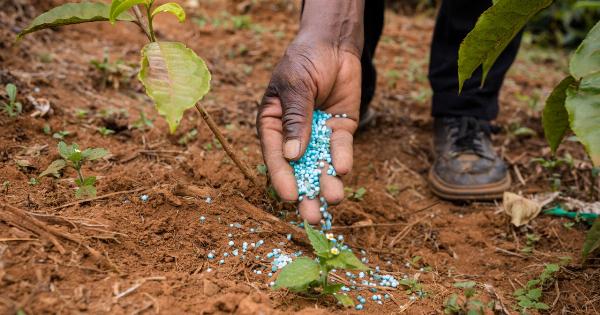Fertility is a topic of great importance for couples wishing to start a family. While many factors contribute to both male and female fertility, recent studies have found a surprising connection between male fingers and their reproductive potential.
This article aims to explore the link between male fingers and fertility, shedding light on the scientific evidence behind this phenomenon.
1. Finger Length Ratio (2D:4D)
One of the main aspects of male fingers that scientists have been studying is the ratio between the second digit (index finger) and the fourth digit (ring finger), commonly referred to as the 2D:4D ratio.
This ratio is believed to be indicative of the balance of prenatal hormone exposure, specifically testosterone and estrogen.
Research has shown that a longer fourth finger compared to the second finger suggests a higher exposure to testosterone in the womb.
On the other hand, a longer second finger relative to the fourth finger indicates higher estrogen levels during development. These hormone levels may potentially influence fertility outcomes in males.
2. Studies on Male Fingers and Fertility
Various studies have investigated the relationship between male finger length ratio and fertility.
One study conducted by researchers at the University of Oxford found that men with a shorter fourth finger in relation to the second finger had a higher sperm count. This suggests that a lower prenatal exposure to testosterone may lead to enhanced sperm production and higher fertility potential.
Additionally, another study published in the journal “Economics & Human Biology” revealed that men with a longer fourth finger had a lower sperm concentration and motility.
The study also noted that men with a longer fourth finger had an increased risk of experiencing fertility issues.
3. Testosterone Exposure and Reproductive Health
Testosterone is a key hormone involved in male reproductive health. It plays a vital role in the development and maturation of testes, sperm production, and overall sexual function.
A higher prenatal exposure to testosterone is believed to contribute to a variety of reproductive advantages, including enhanced fertility potential.
It is important to note that the 2D:4D ratio is not solely determined by prenatal testosterone exposure but also influenced by genetic and environmental factors.
Nonetheless, it serves as an intriguing indicator of the potential effects of hormones on fertility outcomes.
4. Fertility Potential and Hormonal Imbalance
The link between male fingers and fertility potential may be attributed to hormonal imbalances. Hormonal imbalances can influence sperm production, motility, and overall reproductive health.
Different hormone levels during development may lead to variations in the quality and quantity of sperm produced.
Furthermore, an imbalance in prenatal hormone exposure can affect the development of the male reproductive system, potentially leading to structural abnormalities that impact fertility.
These abnormalities can include issues with the testes, prostate, or other reproductive organs.
5. Evolutionary Perspectives
Several evolutionary theories attempt to explain the biological significance of the link between male finger length ratio and fertility.
One theory suggests that a lower exposure to prenatal testosterone, indicated by a shorter fourth finger, may indicate a more nurturing disposition in males, making them potentially better caregivers and partners.
Another theory highlights that men with a longer fourth finger, denoting higher prenatal testosterone, may exhibit more masculine characteristics associated with mating competitiveness and selectivity.
However, these traits may come at the cost of compromised fertility.
6. Importance of Finger Length ratio
While finger length ratio alone cannot determine an individual’s fertility status, it provides valuable insights into their potential reproductive health.
Understanding the link between male fingers and fertility can help identify men who might be at a higher risk of fertility issues and provide them with appropriate medical guidance and intervention.
Moreover, exploring this relationship may lead to advancements in reproductive medicine and contribute to refining existing fertility assessment methods.
By considering the 2D:4D ratio, healthcare professionals can gain additional information to support their diagnosis and treatment planning.
7. Future Research and Implications
Although significant research has been undertaken in the area of male fingers and fertility, more studies are needed to establish concrete conclusions.
It is crucial to investigate the mechanisms by which prenatal hormonal exposure affects fertility outcomes and explore potential interventions to mitigate any negative impacts.
Furthermore, the potential correlation between male finger length and fertility may also have implications beyond reproductive health.
Researchers are examining the link between finger length ratio and other conditions such as cardiovascular diseases, neurological disorders, and hormonal imbalances.
8. Environmental and Genetic Factors
While prenatal hormone exposure is a key determinant of finger length ratio, it is essential to recognize that genetics and environmental factors also contribute to this characteristic.
Genetic variations can influence the sensitivity and effectiveness of prenatal hormones, leading to variations in finger lengths.
Additionally, environmental factors, such as maternal stress or exposure to certain chemicals during pregnancy, can disrupt hormonal balances and influence finger growth.
These factors further emphasize the complexity of the relationship between finger length ratio and fertility.
9. Seeking Professional Advice for Fertility Concerns
It is important to note that finger length ratio should not be a standalone indicator of fertility potential.
If couples are experiencing difficulties conceiving or have concerns about fertility, it is advisable to seek professional medical advice from a fertility specialist or reproductive endocrinologist.
These specialists can provide a comprehensive evaluation, considering various factors such as medical history, lifestyle, and specific fertility tests to assess both male and female fertility potential accurately.
They can guide couples through the available options for fertility treatments and provide support throughout the process.
10. Conclusion
The link between male finger length ratio and fertility provides an intriguing avenue of research within the field of reproductive health.
While numerous studies have highlighted a potential correlation between finger length and various fertility outcomes, further research is necessary to solidify the findings.
Understanding the underlying mechanisms and implications of this relationship can contribute to advancements in assessing male fertility potential and developing targeted interventions.
Ultimately, exploring the link between male fingers and fertility may provide couples with valuable insights and support on their journey towards achieving their dreams of starting a family.































